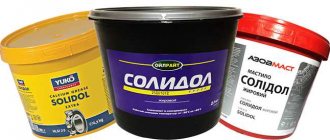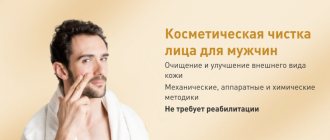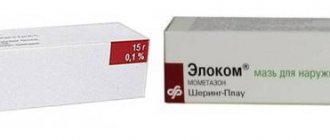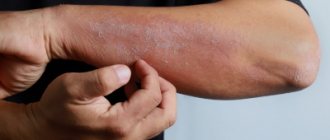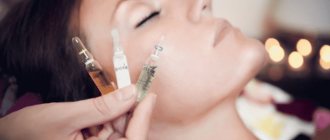What it is?
Birch tar is formed as a result of the distillation of birch buds, wood and leaves. The substance has a viscous, oily structure and has a specific odor. The composition is enriched with many useful substances that are necessary for the human body.
Birch tar is a natural product that is widely used in traditional medicine and cosmetology as the most effective and safe remedy.
Composition and beneficial properties
Tar is a product that has no analogues in its composition and mechanism of action on the body.
It contains the following components:
- Antioxidants;
- Phytoncides;
- Organic acids: guaiacol, cresol and dioxybenzene;
- Toluene;
- Phenol;
- Resins.
It also contains vitamins and mineral components. They nourish, saturate and moisturize the skin, making it silky and soft. Thanks to this combination of beneficial substances in the composition, the product has a multifaceted positive effect on the skin.
Useful properties of tar:
- Restorative;
- Anti-inflammatory;
- Antioxidant;
- Drying;
- Absorbable;
- Antiparasitic;
- Wound healing.
Tar is recommended for use in the following cases:
- Acne and pimples;
- Allergic reactions, manifested by skin rashes of various types;
- Fungus;
- Dermatitis;
- Manifestation of signs of diathesis on the face;
- Demodecosis.
Tar is great for acne on the face. It not only gets rid of acne, blackheads and inflammation, but also directly affects the causes. The product cleanses pores, gets rid of excessive amounts of sebum and destroys pathogenic microflora, which causes the development of inflammatory processes.
Thanks to its antiseptic and antibacterial effect, tar not only fights existing skin blemishes, but also prevents relapses. In addition, it has a whitening effect. If you have freckles or age spots on your skin, regular use of the product will help whiten them in a matter of weeks and prevent their reappearance.
The product helps to avoid premature aging, tighten the skin, and get rid of age wrinkles. Regular use of this natural product allows you to abandon the most expensive cosmetics and salon hardware procedures.
Recipes for making a cleansing mask
Reviews about the product made from birch resin are mostly laudatory. Most often, users note the cleansing effect of tar. You can use both liquid tar and soap based on it. There are several recipes for preparing the product:
Grate the dry soap on a coarse grater and mix in equal proportions with the nourishing cream, then apply to the skin. After 15 minutes, rinse with warm water.
Using soap as the main ingredient is possible without cream. So the effect of drying the skin will be several times stronger. A similar recipe is aimed against acne. You just need to lather a piece of soap and apply the foam to your face. Recommendations for the duration of the procedure remain the same.
You can also fight spot skin problems; to do this, grind the soap until it turns into a pulp and apply it to the pimples, leave for a maximum of 30 minutes and then rinse or remove with cotton pads.
Birch tar can also be used to make an excellent cleansing facial scrub. To do this, apply coarse salt to the skin on top of the foamed soap and leave for 15-20 minutes, and after waiting time, massage your face with dry hands and then rinse. There is a similar recipe for blackheads, but instead of salt they use baking soda, known for its whitening and cleansing properties. Birch tar mixed with honey has anti-inflammatory properties. The ingredients mixed in equal proportions are applied to the facial skin for 15 minutes, and you can forget about small cracks and redness of the skin.
Reviews of the mask, which can be found in large numbers, note not only a cleansing effect, but also a lifting effect. There is a recipe against bulldog, sagging cheeks and to enhance the lifting effect. There are no fundamental differences between a cleansing mask and a lifting mask; the basis is also tar soap, gradually foamed with boiled water. Apply the resulting foam to your face and let it dry.
After the first coat, apply a second coat, paying special attention to the lower part of the face, cheeks, and décolleté. To prevent drying, you can add heavy cream or sour cream to the foam.
After the procedure, also use tonic (or lemon) and moisturizer.
Liquid birch tar is also quite suitable for skin care procedures. Reviews about it can be found not only in the cosmetology section, because it is also used in folk medicine. In cosmetology, tar in liquid form can replace a tonic by adding a few drops of salicylic alcohol and ordinary ethyl alcohol in a ratio of 10 to 1 to the solution.
Based on it, you can also make your own soap, the use of which is discussed above. It’s not at all difficult to make: grate a piece of baby soap and leave it in a steam bath. Add a generous spoonful of birch tar to the resulting mixture, mix well and let it harden. After this, you can use the resulting soap in the same way as store-bought soap.
Mechanism of action
Tar acts on the skin as follows:
- Improves blood circulation, cleansing blood vessels and expanding their walls;
- Activates and accelerates regeneration processes at the cellular level;
- Stops inflammatory processes, regardless of the reasons for their occurrence, and prevents re-development;
- Has an antiseptic effect, destroying pathogenic microflora;
- Cleanses the body of toxic substances;
- Normalizes the functioning of the sebaceous glands, adjusting the process of sebum production.
Contraindications
No matter how useful the birch product is, there are a number of contraindications to its use, these are:
- Pregnancy and breastfeeding period;
- A febrile state accompanied by elevated body temperature;
- Chronic hypertension;
- Frequent pressure surges;
- Skin diseases during exacerbation;
- Kidney and liver dysfunction of varying severity;
- Excessive dry skin.
You cannot use tar if you have an individual intolerance to it. Before applying for the first time, it is recommended to conduct an allergy test.
Frequent use of tar is contraindicated. If you overuse the frequency of applying the composition to your face, this may result in the development of an allergic reaction. Incorrect use may cause side effects:
- Rash and itching on the skin;
- Redness;
- Dermatitis.
Despite the fact that tar copes well with various rashes, before using this method of treatment, you need to determine what leads to their appearance. If the cause is hormonal imbalance or diseases of the endocrine system, it is necessary to treat them with medication, because tar will only remove external manifestations. Without eliminating the root cause, the rashes will recur periodically.
Tar soap: how and in what quantity to use?
An inconspicuous bar of ordinary hygiene product has excellent disinfectant and bacterial properties. You can wash your face and body with it, toning and renewing the skin. It is much healthier than advertised shower gels, saturated with chemical additives and dyes. The cost of a piece is ridiculous, and it will last for a month or more.
You can use it to make a therapeutic mask, but not more than 2 times a week. Grate 1 tablespoon of the product on a fine grater and dilute with water until a dense mass is formed. Leave for 15 minutes and wash off.
Tar soap for the face is universal; it dries out inflamed skin and accelerates cell regeneration, restoring it to its former freshness and beauty. Thanks to the addition of olive oil, the following recipe will be suitable for those with dry skin:
- crushed soap - 1 tbsp;
- olive oil approximately 1 tsp;
- peach – 3 drops.
Mix soap with 1 teaspoon of water, add butter to obtain a thick consistency. Keep the mask on your face for no more than 15 minutes. Another effective recipe is given in the video.
Tar soap is effective for hair; it contains many components that help strengthen hair follicles. After a course of use, the curls become soft and elastic. If you decide to use home remedies to strengthen your hair and eliminate dandruff, then you should prepare 50 ml of liquid tar soap and 1 tsp of glycerin. The mass is rubbed into the scalp with a cotton pad (effect – 1 hour), then washed off with shampoo.
Recipe for dandruff with vodka:
- castor oil – 2 tbsp;
- 1 tbsp of birch tar is enough;
- vodka – 100 ml.
After mixing, the consistency is rubbed into the scalp (exposure – 1 hour). After a few uses, there will be no trace of dandruff left. Tincture of walnut partitions can also help in treating this problem if tar is not suitable for some reason.
Rinse for all hair types:
- 50 g tar soap;
- 1 liter of water.
The soap is rubbed and placed in a water bath, melted to a liquid base, mixed with water and left for a couple of days. Store in a tightly closed glass container. The resulting base can be added 50 ml to 1.5 liters of water while rinsing the curls. After using the product, the strands become manageable and thicker.
Tar, the use of which has been known since ancient times, is an excellent anti-inflammatory and cleansing agent given to us by nature. Using it for your face and hair, you can save on the purchase of expensive cosmetics and get effective results in a short course of use.
Methods of using tar
Tar can be bought at a pharmacy. It is sold in various versions - soap, liquid composition in bags and jars, foam for washing. In cosmetology, birch product is used in various forms for facial care. Based on this component, masks, ointments and creams are prepared that can be applied at home.
To get the effect of treating problematic facial skin faster, it is recommended, in addition to applying cosmetic products made from tar, to take it orally. Place 4 drops on a small piece of black bread and eat it in the evening. On the second day, increase the number of drops by 1, on the third by another 1, and so on to 10. Use 10 drops for 2 weeks, after which the amount should be reduced, gradually reaching the original.
This method of using tar will help cleanse the body, normalize the functioning of the digestive system, which will have the best effect on the condition and appearance of the face.
But, be careful! We strongly recommend that before using it internally, consult a competent doctor, or better yet several, in order to draw conclusions about the need to use tar internally!
Tar can be consumed with water. To speed up the process of getting rid of acne and other types of rashes, this method is recommended to be combined with masks. To prepare the drink, add liquid tar (350 ml) to a container with 4 liters of water. Leave to infuse in a dark place. Remove any sediment that appears at the bottom of the jar. Take 100 ml every day in the morning 10-20 minutes before breakfast. Duration of use: 30 days.
Due to the resin content, tar is poorly soluble in water and this clot, when taken orally, is likely to cause nausea or vomiting, as well as irritation of the mucous membranes and, ultimately, poisoning.
Recipes for masks based on tar soap
You can make tar soap at home with your own hands. In terms of its effect at home, it turns out to be softer, but the foam is worse. Take a piece of regular baby soap and grate it. Heat the soap shavings in a water bath. When the soap begins to melt, add a little water and reduce the heat to low. After the mass becomes sticky, add 2 large spoons of liquid tar to it. Remove from heat and cool, then pour into any molds. After 2-3 days the soap should harden. A mask with tar soap is used very often in folk medicine, so there are quite a lot of recipes for it: 1. To cleanse pores of blackheads. Grate the soap, add a small amount of water and beat into thick foam. Add a pinch of table salt and stir. Gently apply to skin for no more than 10-15 minutes. Rinse off with cool water. 2. For a lifting effect. Whip up the soap foam. Add a tablespoon of thick, fatty sour cream to it and mix. Apply the paste in a thick layer to the jawline for no more than 15 minutes. A similar mask with tar soap will get rid of flabby cheeks (jowls). With its help, you can forget about ugly folds that deform the contour of the lower jaw. 3. To get rid of acne. Lather a bar of soap using a sponge. Apply the resulting foam thickly to your face, and sprinkle coarse salt on top. Wait until the mask is completely dry, this will take about half an hour. Massaging, with dry hands, exfoliate the salt, and rinse off the remaining mask with warm running water.
Those with very oily skin can wash their face with tar soap in the morning and evening (before bed). For other skin types, only a one-time wash is suitable. If your skin is particularly sensitive, you should not treat the entire surface of your face with soap. In this case, apply soap foam individually to each pimple with a cotton swab.
